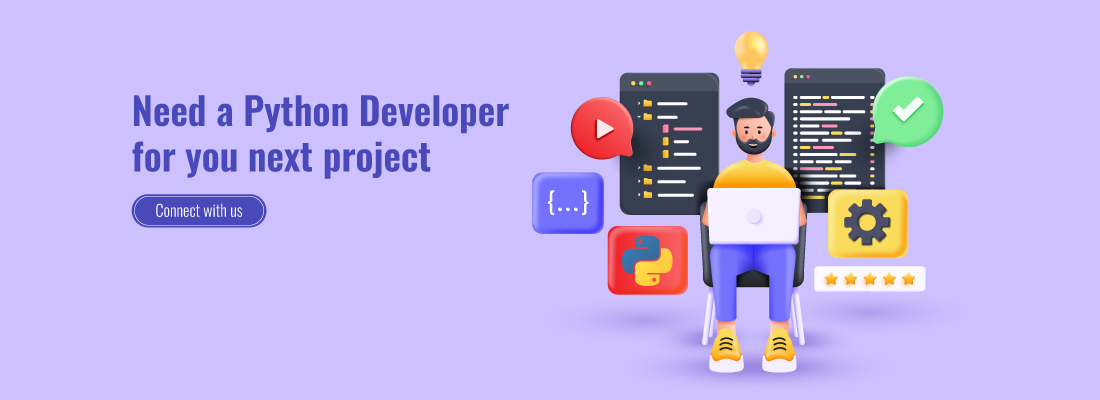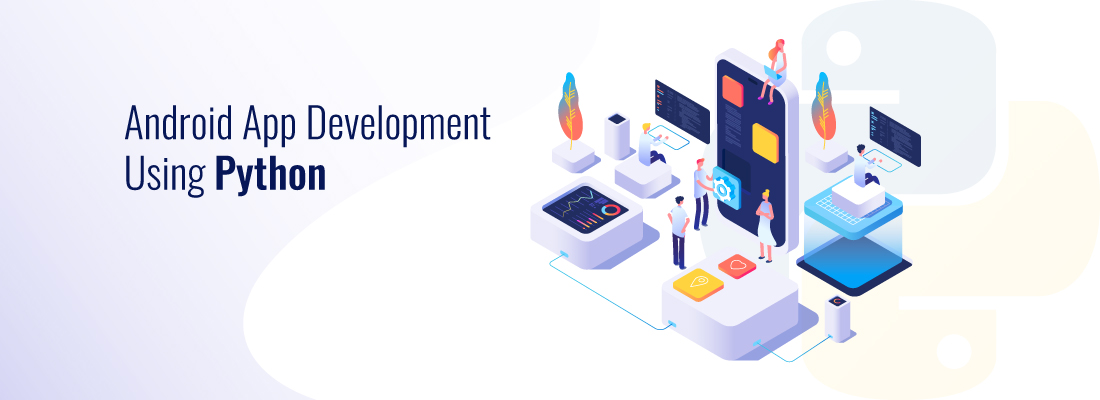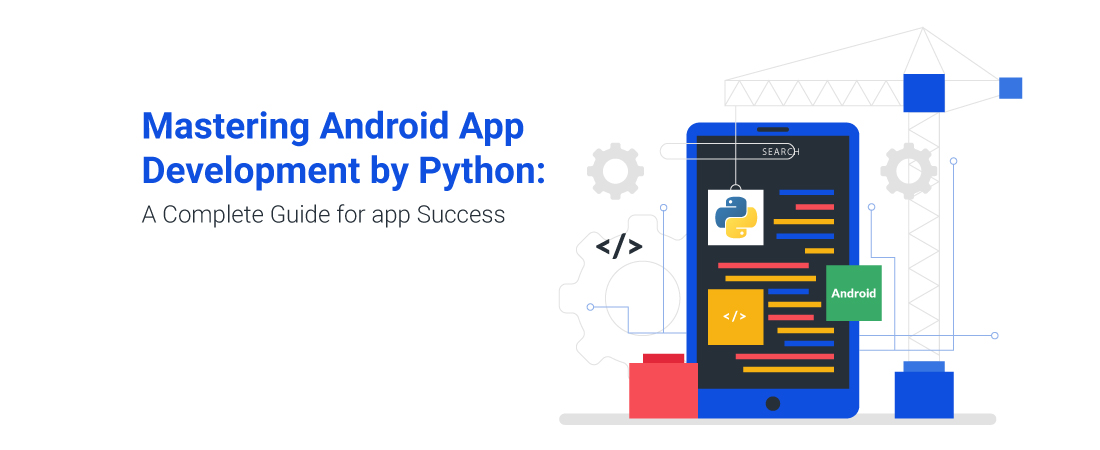Python is developing as a game-changer in the dynamic field of mobile app development, providing a new angle on creating potent Android applications.
The preferred languages for Android development have always been Java and Kotlin, but Python is causing a stir because of its ease of use, adaptability, and expanding ecosystem of tools and modules.
In this article, we’ll examine the fascinating field of Android app development by Python, showcasing its advantages and outlining how to get started.

Why Python for Android App Development?
1. Ease of Learning and Readability: Python is a great choice for both inexperienced and seasoned developers due to its simple syntax that is simple to understand. The learning curve is shortened and development is accelerated by readable code.
2. Versatility: Python is renowned for its flexibility and is widely used in artificial intelligence, data research, and web development. The ability to effortlessly tap into these domains is made possible by using Python for Android programming.
3. Rapid Prototyping: Python’s dynamic typing and interpreted nature allow for rapid prototyping. Developers can quickly iterate and test ideas, speeding up the development process.
4. Large Community and Libraries: Python has a sizable, vibrant community, which has produced a sizable collection of libraries and frameworks. These tools make a variety of development jobs easier, including database integration and user interface design.
5. Cross-Platform App Development: Python makes it easier to create cross-platform apps. Developers may write code that runs on both Android and iOS, saving time and effort, by using frameworks like Kivy and BeeWare.
Challenges and Considerations
Even though Python has many benefits, it’s important to be aware of some difficulties:
● Performance: Python is an interpreted language, which can have an impact on how quickly apps load when compared to languages that are natively built, like Java. But this can be reduced with the correct optimizations and framework selection.
● Variability in the ecosystem: Java and Kotlin both have large libraries at their disposal, whereas Python’s environment for developing Android apps is still developing. Some features may require developers to implement them independently or use native code.
Getting Started with Android App Development by Python

1. Set Up Your Development Environment:
The first step in creating an Android app with Python is setting up your development environment.
Installing Python on your development system is the first step.
From the official website, you may download the most recent version of Python and install it by following the steps for your particular operating system.
After that, you must set up Android Studio for Android programming.
The official integrated development environment (IDE) for creating Android apps is called Android Studio.
Install the required Android SDK components, download and install Android Studio from the official website, and then set it up by configuring your virtual devices (emulators) and actual Android devices for testing.
2. Choose a Framework
Python provides a number of frameworks that make it possible to create Android apps. You must decide which one best fits the demands of your project.
For instance, Kivy is a well-liked option recognized for its multi-touch support and cross-platform capabilities, and BeeWare offers Python native app development tools.
3. Master UI Design
A crucial stage in creating an Android app is designing the user interface (UI). You can use framework-specific tools or libraries to build the user interface, depending on the framework you’ve chosen.
For example, Kivy provides Kivy Designer, a visual app UI creation tool.
Alternatively, if you’re integrating Python into a project that is predominantly Java/Kotlin-based, you can use XML layouts in Android Studio.
4. Code Your App Logic
Python will be used in this step to create the fundamental logic of your Android app.
The framework you choose will let you use Android APIs and functions. Here, you put your app’s functionality into action, manage user interactions, and handle data.
5. Test and Debug
To make certain that your app functions properly on Android smartphones, extensive testing is essential.
To simulate various devices and Android versions, use the Android emulators offered by Android Studio.
Additionally, testing on actual Android devices is necessary to confirm performance and user experience in the real world.
Be prepared to troubleshoot and fix any issues that surface during testing.
6. Optimize Performance
The process of performance optimization never ends. To find bottlenecks and places where optimization is required, profile your app.
Because Python is an interpreted language, efficiency can be increased by picking effective data structures and optimizing key code portions.
There are other framework-specific optimizations and caching methods that can be used.
7. Publish Your App
You can get ready for Google Play Store publication once your app has undergone extensive testing and optimization.
Create a developer account, set up a listing, make promotional materials, and ensure store standards are followed by adhering to Google’s submission criteria for apps.
You can make your app available to all Android users by publishing it.
FAQs
What is the Python learning curve like for developing Android apps?
Python is renowned for being simple to learn and readable. Python’s accessibility makes it usable by a wide spectrum of developers, whether they are experienced Python programmers or fresh in the field.
Is Android Studio necessary for developing Python apps on Android?
Python integration into Android projects is supported by the popular Android programming tool Android Studio. Android Studio offers a stable environment for Android app development, however, it is not required.
Does Python have any restrictions when used for Android development?
Even while Python has many benefits, performance is a crucial factor, especially for resource-intensive applications. Furthermore, the ecosystem for Python for Android development might not be as developed as that for Java or Kotlin.
Final thoughts
Finally, Python is democratizing the process and drawing programmers from all backgrounds, ushering in a new era for Android app development.
Python enables developers to produce inventive Android applications that live up to contemporary user expectations because of its simplicity, versatility, and selection of appropriate frameworks.
Embrace Python to open up a world of opportunities in the dynamic world of Android app development.
Ready to use Python to implement your Android app idea? Start your development journey right away and discover Python’s transformational potential for creating Android apps.
Get in touch with Yugasa Software Labs to find out more and realize your dreams. Python is the foundation of your app’s success.
























